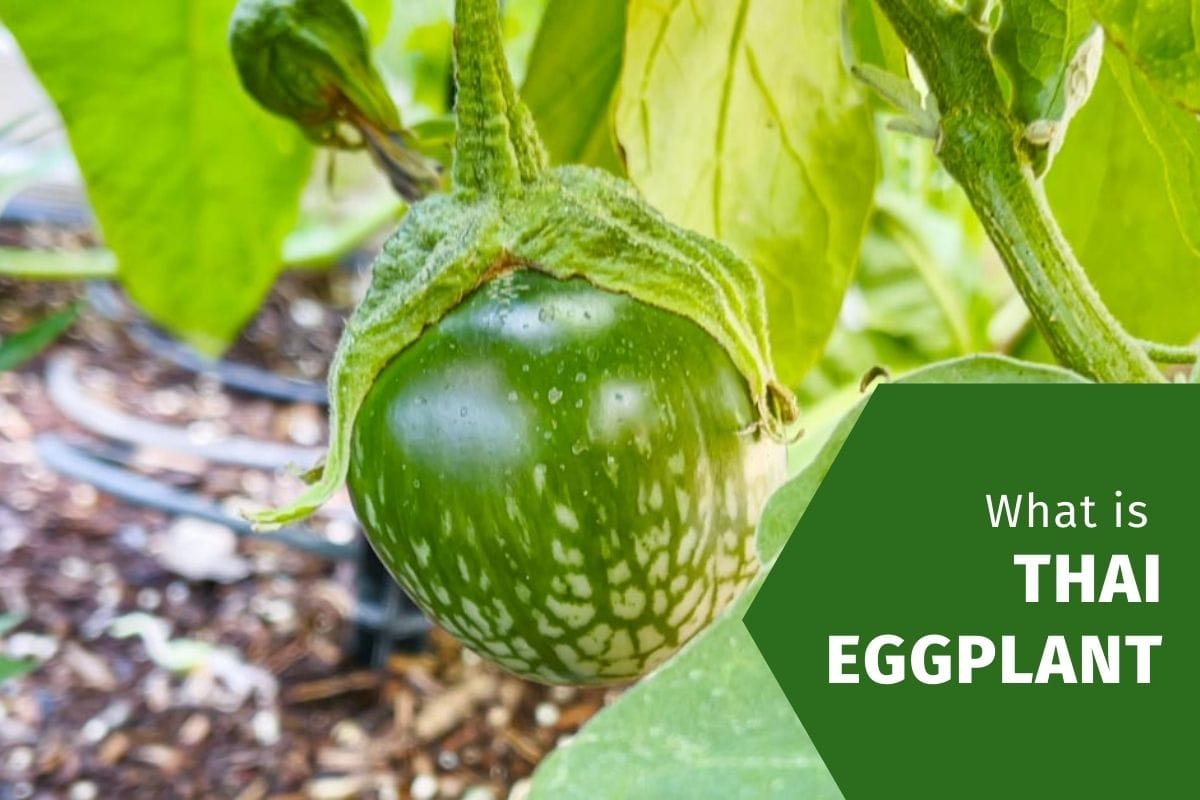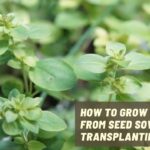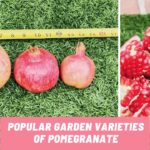Thai eggplant is a common name given for many varieties of eggplant found not only in Thailand but among other Southeast Asian countries. Depending on the cultivar, the fruits of Thai eggplant can vary in shape from long slender to round. The most common and often used is the green and golf ball-sized variety called Ma Khuuea Broa (Thai:มะเขือเปราะ).
A culinary vegetable but really a fruit, eggplant is classified as a berry because it contains small, edible seeds.
How to eat Thai eggplant
In Thailand, you’ll often find Thai eggplant served raw, steamed (boiled), stir-fried, or in the famous Thai green curry (gaeng keow waan) and red curry. Young eggplant fruits are suitable for eating raw because of the taste being milder with a crunchy texture. They aren’t as bitter as your typical purple eggplant. Raw and steamed Thai eggplant are often accompanied by hot spicy, and often pungent, dips.
Stir-frying is another popular way to eat Thai eggplant. You can use them as vegetables or as protein replacement in your stir-fry recipe. Adding fresh basil leaves and some crushed chili pepper will get you an almost authentic Thai Basil eggplant dish.
Thai round eggplant is one of the main ingredients in one of Thailand’s national curries, the green curry (gaeng keow waan). Even when halved or quartered, round Thai eggplant doesn’t break apart or turn mushy. They keep their green color once cooked which is why they’re ideal for green curry.
Turkey berry fruits, or pea eggplant, are also used in Thai green curry.
Thai eggplant are cooked and consumed with the skin left on. Remove the stem but you don’t need to peel them.
How to store Thai eggplant
Thai round green eggplant has a longer shelf life than its purple cousins. You can extend the shelf life by keeping them in a fridge. A low-humidity drawer of a fridge will prevent them from rotting prematurely. It’s best to freeze whole for longer storage. Once cut, soaking them in water with a few drops of lemon juice or vinegar will help delay discoloration and browning.
Thai eggplant tree growing
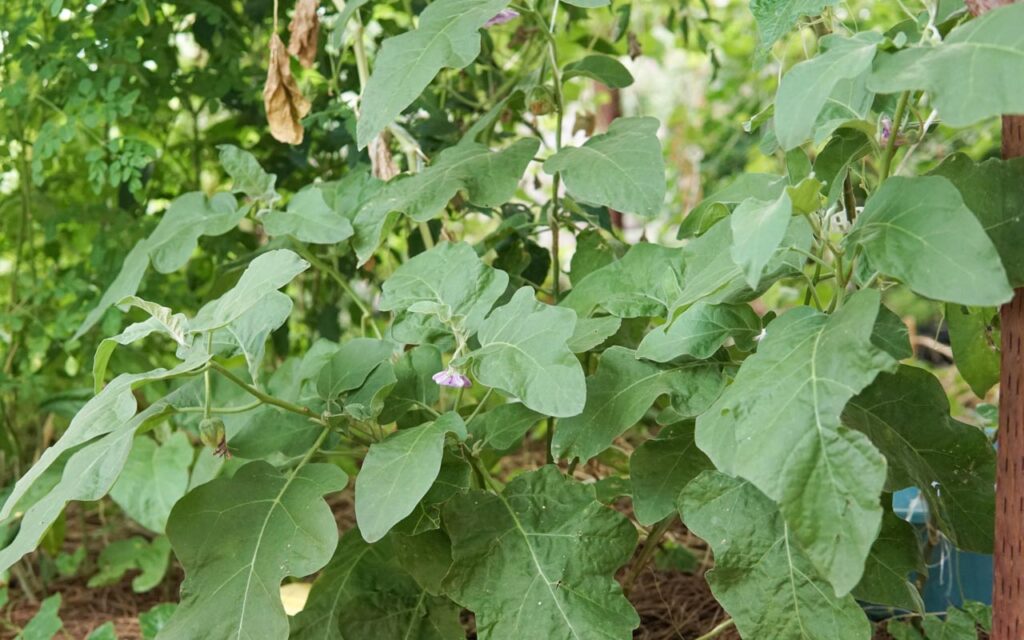
Like many other eggplant varieties, Thai eggplant is a bushy plant with thick, woody stems. The leaves are large, lobed, green to grayish in color. Mature Thai eggplant trees can grow between 1 to 5 feet in height.
Eggplants are often grown as annuals. But my oldest Thai eggplant bush is coming to its 5th year and giving us fruits almost year round.
Eggplants are native to warm tropical climates. Thai eggplant is no different. They grow best when the temperatures are between 75 to 95°F. Outside this optimal range will stunt growth and cause the plant to stop flowering. The plant, especially the leaves, are frost-sensitive. This means unprotected eggplant from prolonged deep freeze will die.
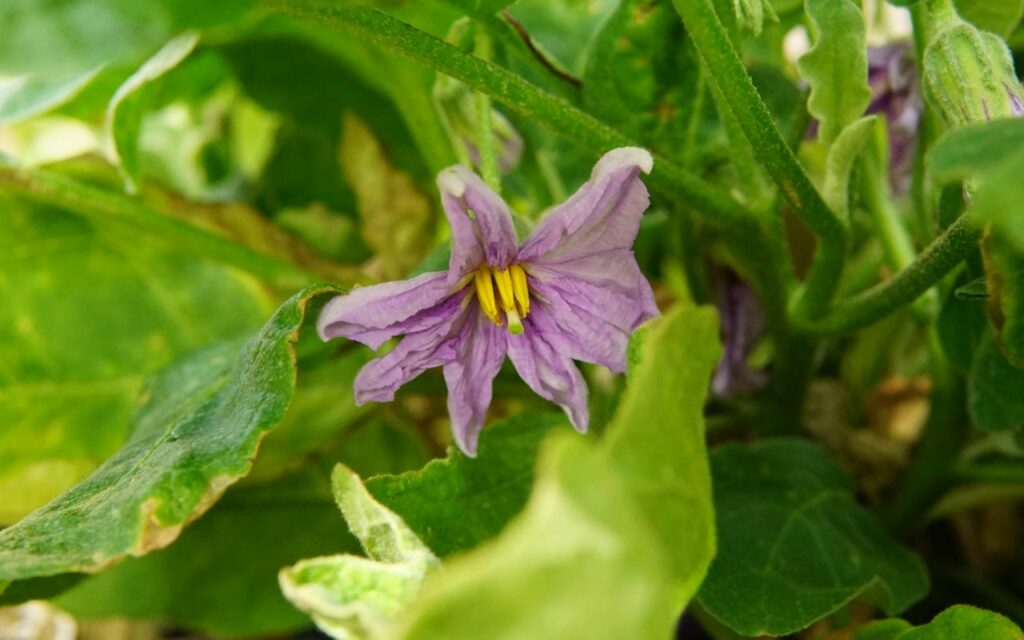
Flowers from Thai eggplant are purple and star-shaped. They are self-pollinating, meaning they have flowers that contain both male and female parts. Tell-tale sign pollination was successful is when the green stem behind the flower begins to enlarge. Which means an eggplant is on its way.
What is the best to way to grow Thai eggplant
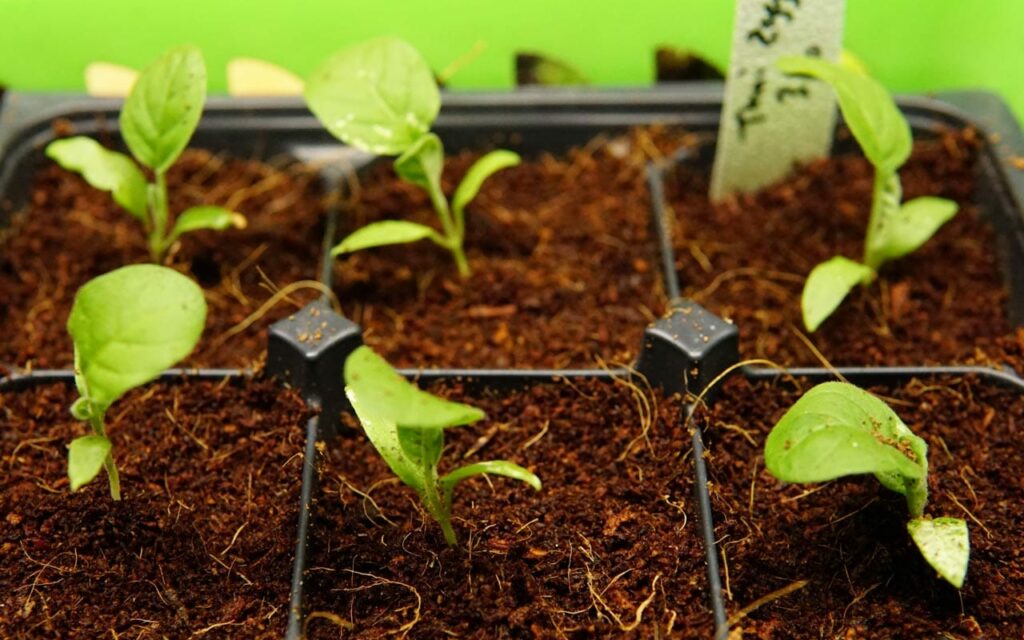
It is better to transplant than directly sow in the garden. This means starting Thai eggplant seeds indoors. This will help ensure germination as the seeds need 80 to 90°F to germinate. Which takes about 10 days at optimal conditions. Thai eggplant seedlings will be ready to transplant after five to six weeks.
